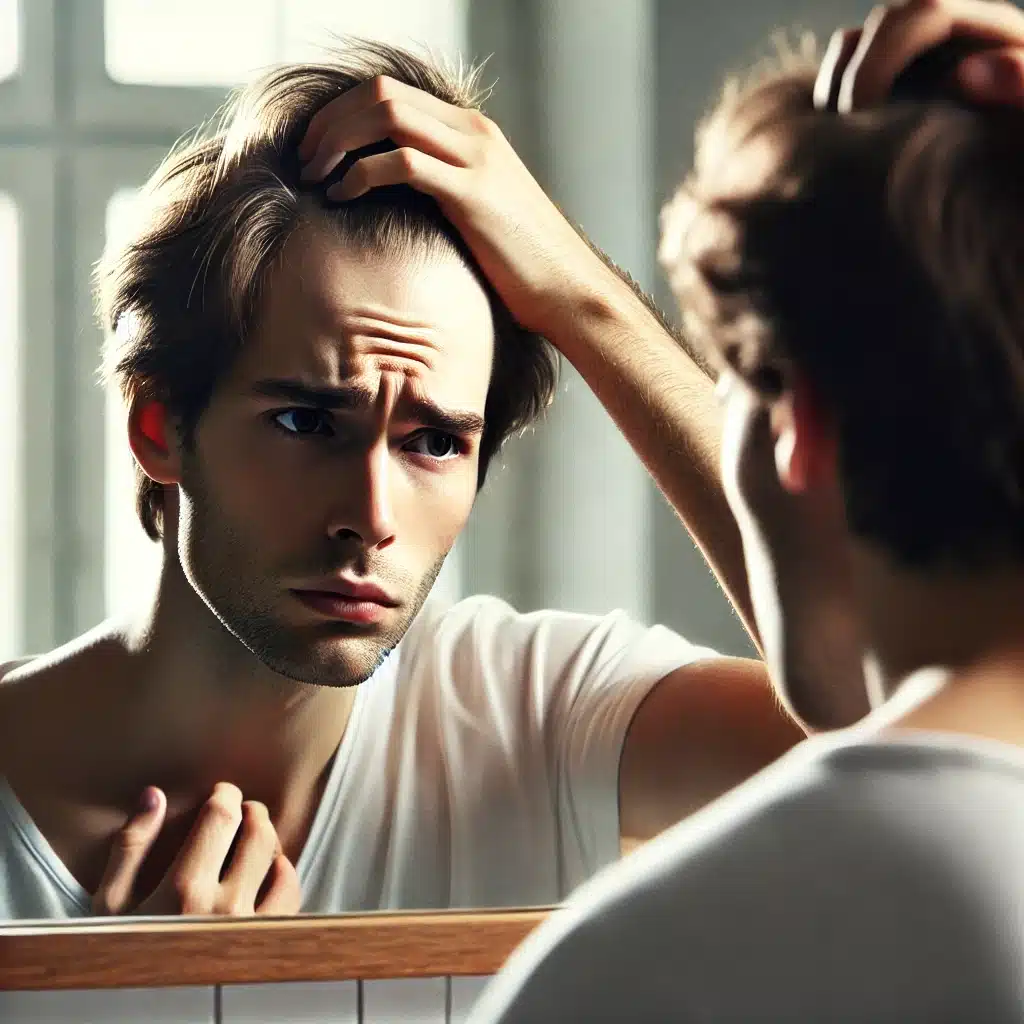
The Hair Loss Struggle: More Than Just a Cosmetic Issue
Losing your hair can feel like you’re losing a part of yourself. Every strand that falls seems to take a bit of your confidence with it. Whether you’re noticing a thinning crown, a receding hairline, or bald spots that weren’t there before, the emotional impact can be profound. Hair isn’t just about looks—it’s tied to our identity, our confidence, and how we present ourselves to the world. Imagine if there were a way to turn back the clock, using your own body’s natural powers to restore that lost hair. That’s where stem cells come in, holding the promise of not just halting hair loss, but possibly reversing it altogether.
Can Stem Cells Actually Treat Hair Loss?
Stem cell therapy is shaking up the world of hair restoration. Traditional methods like hair transplants or medications often feel like a temporary fix or a way to slow down the inevitable. But with stem cell hair therapy? It’s about harnessing your body’s own regenerative abilities to breathe new life into your hair. This isn’t about covering up the problem—it’s about tackling it head-on and potentially reversing hair loss in a way that was once only a dream.
Hair loss is a complex issue, influenced by genetics, hormones, and the natural aging process. For some, it’s a slow progression; for others, it’s sudden and distressing. The most common type, male pattern baldness, affects over half of men by the time they hit 50. But women aren’t exempt—many women experience a different, but equally challenging, pattern of thinning hair that can be emotionally taxing.
Different Types of Hair Loss: Know What You’re Dealing With
Before diving into hair loss treatments further, it’s crucial to understand the type of hair loss you’re dealing with. Hair loss comes in many forms, each with its own set of challenges.
Androgenetic Alopecia (Male and Female Pattern Hair Loss): The most common form, typically hereditary.
Alopecia Areata: Sudden, patchy hair loss triggered by the immune system attacking hair follicles.
Telogen Effluvium: Temporary shedding often caused by stress, illness, or hormonal changes like those after childbirth.
Anagen Effluvium: Rapid hair loss usually associated with medical treatments like chemotherapy.
Traction Alopecia: Hair loss from hairstyles that put too much tension on the hair.
Scarring Alopecia (Cicatricial Alopecia): Permanent loss due to inflammation that damages hair follicles.
Understanding which type you’re facing is the first step in finding the right treatment.
The Emotional Weight of Hair Loss
It’s not just about losing hair; it’s about losing confidence, feeling less like yourself, and facing the world differently. In a society where a full head of hair symbolizes youth and vitality, the psychological impact of hair loss can be significant. You might find yourself avoiding social situations, feeling anxious about your appearance, or even struggling with low self-esteem. Studies have shown that those dealing with hair loss are more likely to experience social anxiety and a reduced quality of life. But it doesn’t have to be this way—especially if new treatments can help restore what’s been lost.
What Exactly Are Stem Cells?
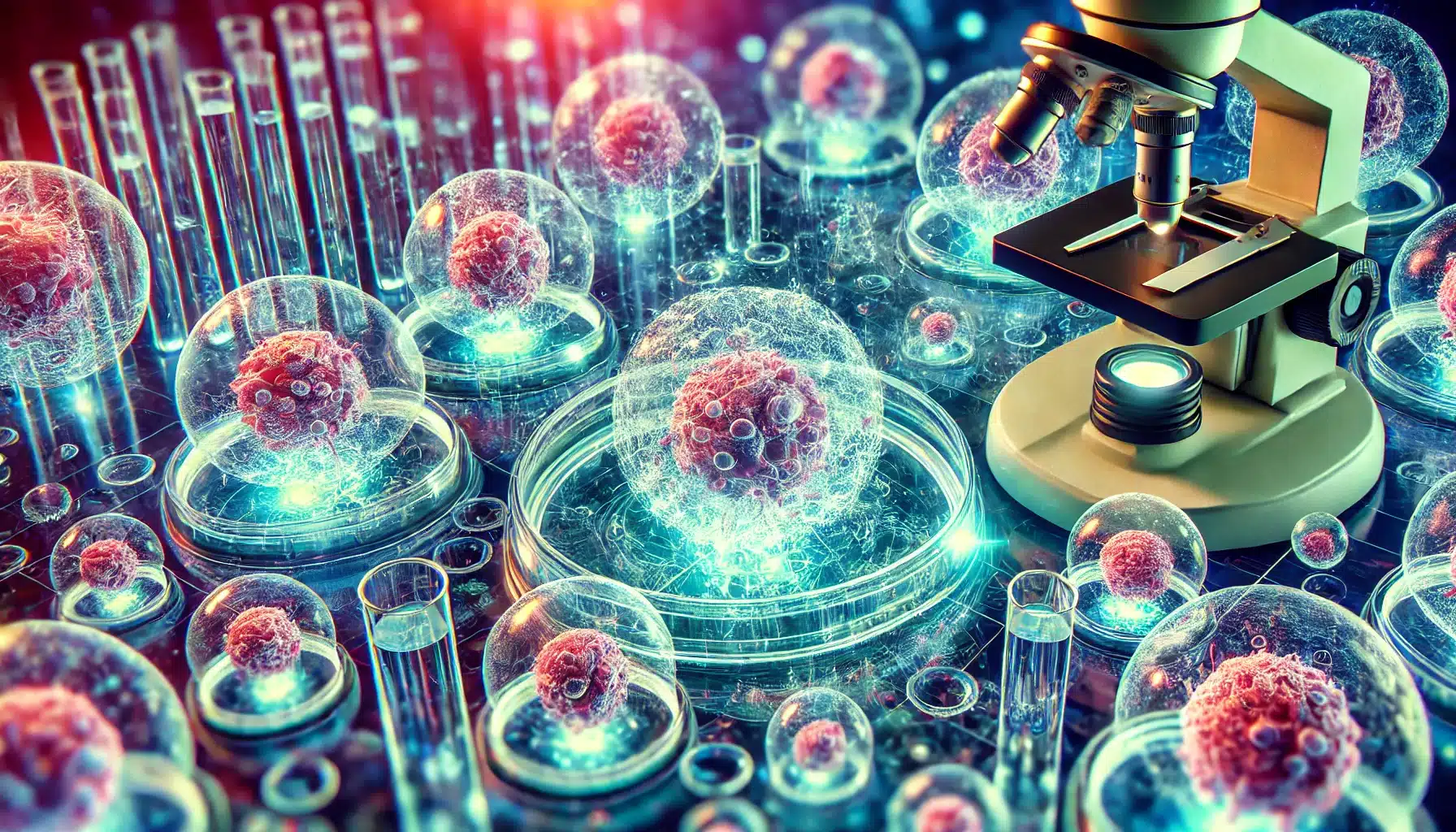
Stem cells are the building blocks of life, with the remarkable ability to develop into different types of cells in the body. They’re like a repair system, ready to jump into action when the body needs to heal or regenerate. In the context of hair loss, mesenchymal stem cells (MSCs) and hair follicle stem cells are particularly exciting because of their potential to regenerate hair follicles.
Recent discoveries have shown that stem cells, especially those derived from bone marrow and fat tissue, could play a pivotal role in bringing hair follicles back to life. These cells might just hold the key to not only stopping hair loss but actually reversing it by generating new hair where there was none before.
The Role of Stem Cells in Hair Regeneration
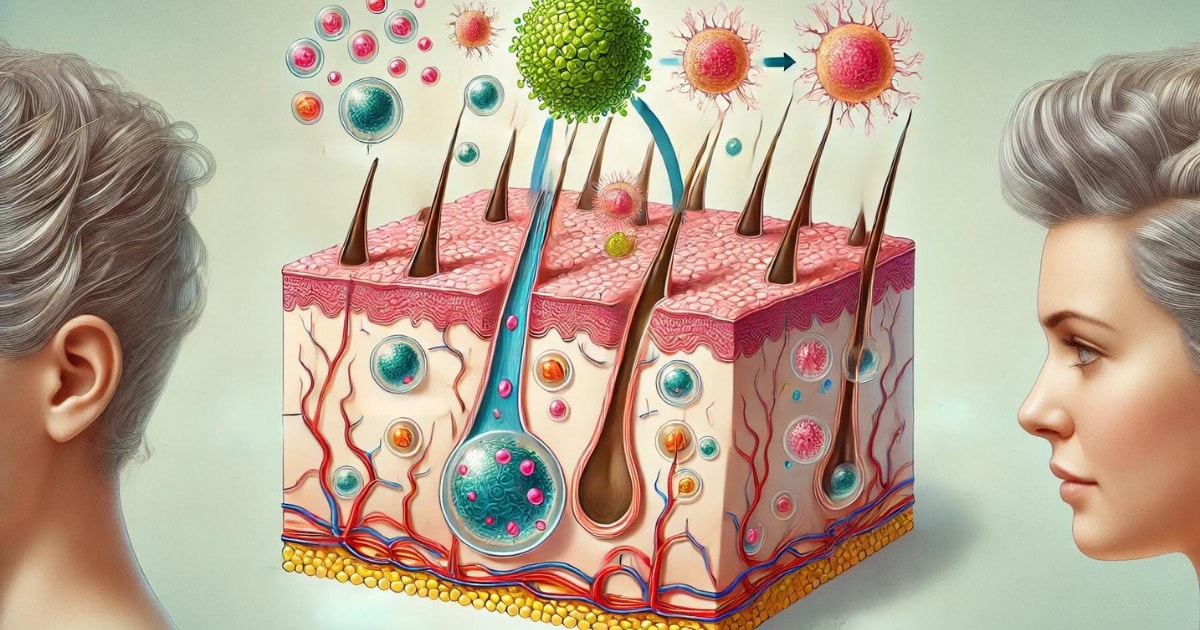
Stem cells have a dual role in the body: maintaining healthy tissue and repairing damaged areas. Mesenchymal stem cells, in particular, are like little chameleons, capable of transforming into bone, cartilage, and even hair follicle cells.
When it comes to hair restoration, these cells could potentially revive dormant or damaged human hair follicles. Imagine injecting these powerful cells into your scalp, where they go to work, repairing and rejuvenating the very follicles responsible for your hair. It’s like giving your hair a fresh start from the roots.
How Stem Cells Could Revolutionize Hair Loss Treatment
Stem cells are at the forefront of the battle against hair loss because of their unparalleled ability to repair and regenerate. Mesenchymal stem cells, for instance, can transform into various types of cells, including those crucial for hair growth.
In hair restoration, these cells are like a rejuvenating elixir for the hair present your scalp. When injected into areas where hair is thinning or has stopped growing, they can help to kickstart the follicles back into action, leading to new hair growth. This isn’t just about stopping hair loss—it’s about reversing it, giving you thicker, fuller hair.
The Science Behind Stem Cells and Hair Regrowth
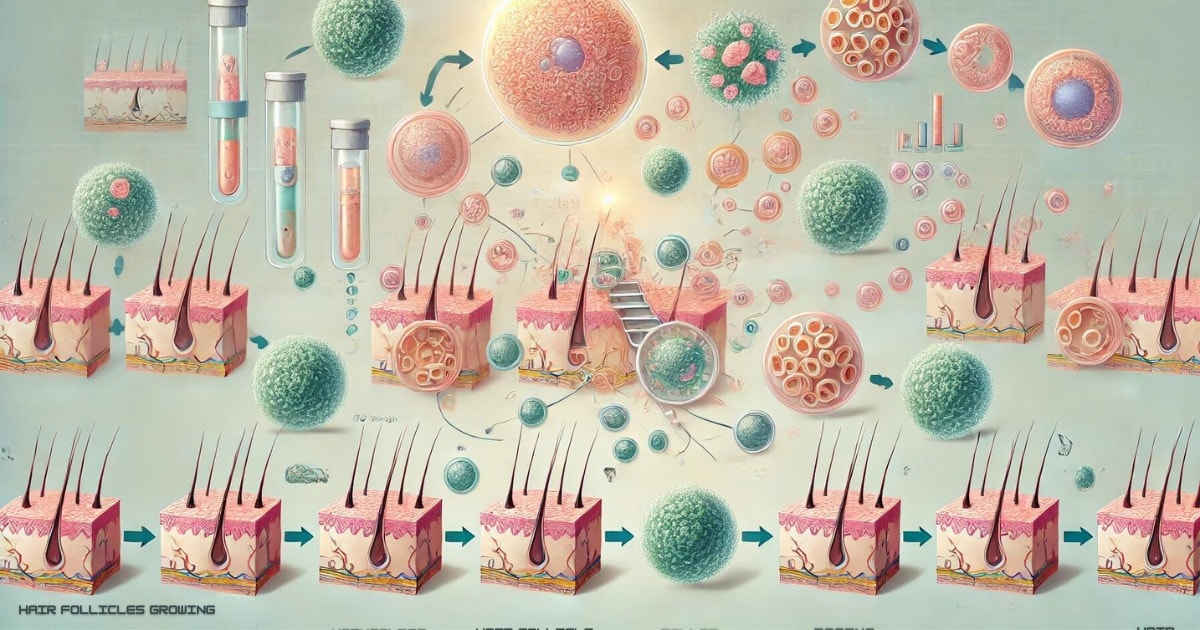
The science of stem cells and hair regrowth is as fascinating as it is promising. Hair follicles are tiny but complex structures that produce hair. To maintain a full head of hair, these follicles need to stay healthy. But over time, due to genetics, aging, or hormonal changes, they can shrink, become inactive, or die.
Research suggests that stem cells could be especially effective in cases of androgenetic alopecia, where the hair follicles shrink and lose their ability to regenerate. By introducing new, healthy cells into the scalp, stem cell therapy could help to reverse this process, leading to thicker, fuller hair. This possibility makes stem cell therapy one of the most exciting developments in the field of hair restoration.
The Interaction Between Stem Cells and Hair Follicles
Stem cells, particularly those derived from fat tissue or bone marrow, have shown incredible potential in revitalizing hair follicles. When introduced to the scalp, these cells can migrate to thinning areas or dormant hair follicles and help repair and stimulate them, bringing them back to a state where they can produce hair again.
This process is driven by growth factors secreted by the stem cells, which promote cellular activity within the hair follicles. By boosting the health of your existing hair follicles and potentially encouraging the formation of new ones, stem cells offer a revolutionary approach to treating hair loss.
The Complex World of Hair Follicle Biology
Hair follicles are intricate structures, each capable of producing one strand of hair. They go through cycles of growth, rest, and shedding. In healthy individuals, this cycle is well-regulated, resulting in consistent hair growth.
However, in cases of hair loss, this cycle is disrupted. Hormonal changes, aging, and stress can push follicles into the resting phase prematurely, leading to thinning hair and eventually baldness. Stem cell therapy could potentially reset this cycle, encouraging follicles to return to the growth phase and restore hair density.
How Stem Cell Therapy Works for Hair Regrowth
Stem cell therapy for hair regrowth works through several key mechanisms. One significant advantage of stem cells is their anti-inflammatory properties, which can reduce inflammation often associated with hair loss conditions like alopecia areata. By calming inflammation, stem cells create a more favorable environment for hair follicles to thrive.
Additionally, stem cells can enhance blood flow to the scalp, ensuring that hair follicles receive the oxygen and nutrients they need to grow. This increased circulation, combined with the regenerative properties of stem cells, can lead to noticeable improvements in hair thickness and overall scalp health.
The Cutting-Edge Research: What We Know So Far
While we’re still in the early stages of understanding the full potential of stem cells for hair loss, the research so far is incredibly promising. Studies have shown that stem cell therapy can stimulate hair growth in men and women with various types of hair loss. The process of stem cell hair transplant involves extracting hair follicles, culturing them in a lab, and then injecting them back into the scalp to stimulate growth. Some patients have reported significant improvements in hair density and quality after undergoing stem cell treatment.
Breakthrough Studies: A New Hope for Hair Restoration
One of the most exciting areas of research involves adipose-derived stem cells—those harvested from a patient’s own fat tissue. These Adipose cells (fat cells) have shown the ability to induce hair regrowth by reviving dormant follicles. A 2020 study revealed that patients treated with adipose-derived stem cells experienced a significant increase in hair density after just a few sessions.
Another promising study focused on mesenchymal stem cells, known for their regenerative properties. The findings suggested that these cells could prolong the growth phase of hair follicles, resulting in thicker, stronger hair. For anyone struggling with hair loss, this stem cell hair treatment could be a game-changer.
From Lab to Real Life: What to Expect with Stem Cell Therap
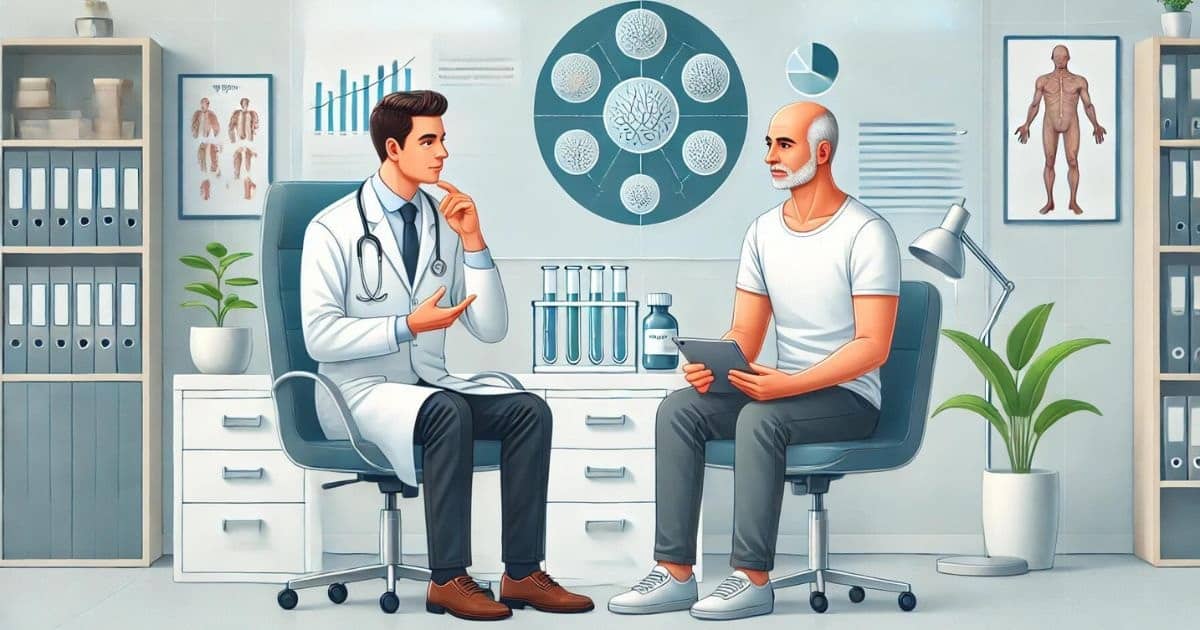
While the science behind stem cell therapy is fascinating, what does the actual treatment look like in practice? Moving stem cell hair treatments from research to reality involves a series of steps, from your first consultation to the actual treatment and beyond. If you’re considering this cutting-edge therapy, understanding the process can help set realistic expectations.
Stem Cell Hair Restoration
The path of hair restoration with stem cells begins with a comprehensive consultation. During this session, a specialist will assess your hair loss pattern, review your medical history, and determine if you’re a suitable candidate for the treatment. If you decide to move forward with stem cell treatments, the next step involves harvesting stem cells, typically from your own body.
The most common method for sourcing stem cells is through adipose tissue, collected via a minimally invasive liposuction procedure. Once harvested, the adipose derived stem cell and cells are processed and prepared for injection into your scalp. The procedure itself is relatively quick, often completed in a single session, with minimal downtime.
After the stem cells are injected, they go to work, interacting with your hair follicles to stimulate growth and improve overall scalp health. Over the next few months, you’ll start to notice changes—thicker hair, improved texture, and a more youthful appearance.
Schedule Your Consultation Today!
Thinking about stem cell therapy for hair restoration? Start your journey by scheduling a consultation with our team at Stem Cells LA. Nestled in the vibrant heart of Redondo Beach, Los Angeles, our clinic combines personalized care with cutting-edge regenerative medicine.
Visit Our Redondo Beach Clinic
Step into our modern, welcoming facility in Redondo Beach, where you can discover the transformative potential of stem cell therapy. Whether you’re a local or coming from afar, our convenient Los Angeles location makes it simple to get the care you deserve.
Address:
Stem Cells LA
1970 S Prospect Ave #2
Redondo Beach, CA 90277
Get in Touch
We know that every hair restoration journey is unique, and we’re here to support you every step of the way. If you have any questions or are ready to schedule your consultation, please reach out:
Phone: (310) 281-6160
Book Online: stemcells.la
Take the first step towards revitalizing your hair and boosting your confidence. Contact Stem Cells LA today to schedule your consultation and learn how stem cell therapy can help you achieve your hair restoration goals.
